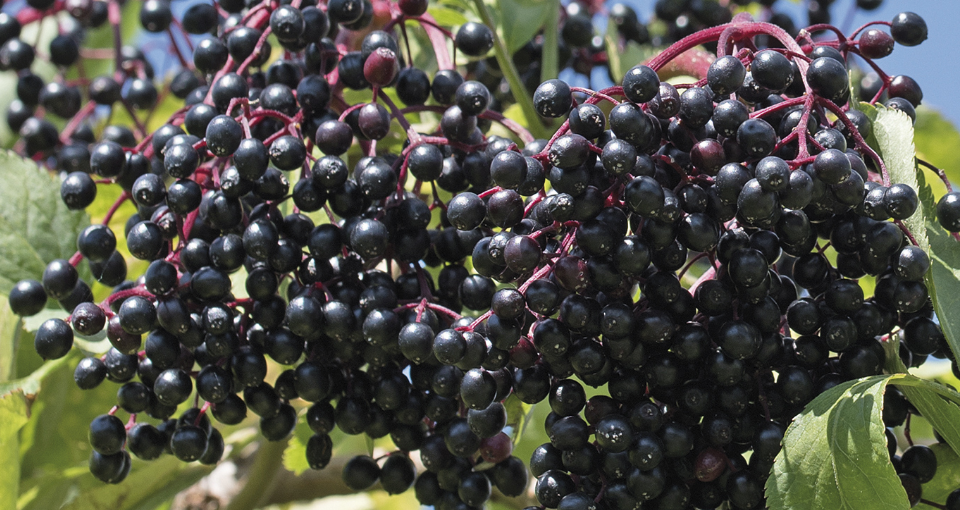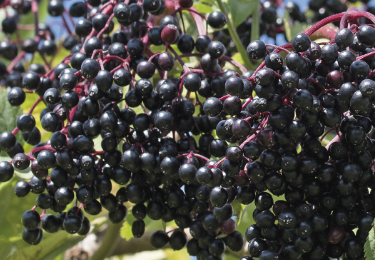
Watchlist
You can print out your watchlist and use it as a reminder for your purchase in the pharmacy.
Your watchlist currently contains no products.
Print


Elderberry
Elderberry
Botany
The black elder (Sambucus nigra) - also known as lilac, German lilac, elder or elderberry - comes from the plant genus of the muskweed family (Adoxaceae) and has been used for medicinal purposes since the Middle Ages.
Elder is a woody plant that grows as a semi-shrub, shrub or small tree. It reaches a height of 1 to 8 meters. Its opposite, unpaired pinnate leaves are accompanied by three to nine elliptical, mostly serrated leaflets, which can also show secondary pinnae on the basal pairs of leaflets. The stipules are large to inconspicuous or absent, sometimes reduced to glands or a hairline.
In spring and summer, many flowers are clustered together in terminal, umbrella-shaped or paniculate inflorescences. Hermaphrodite flowers, which are radially symmetrical and three to five-petalled with a double perianth, are accompanied by three to five tiny sepals that are fused into a short tube and have three to five mostly white, short fused petals. The anthers are elongated. The carpels (three to five) grow into a three- to five-chambered ovary. There is only one ovule per carpel. The very short style ends in three to five capitate stigmas.
The berry-like drupes are black when ripe and contain three to five seeds with a membranous seed coat.
more
History
"There's magic in elderberries" - at least that's what countless conversations with people in and around the Teutoburg Forest, who have been rooted in this corner of the world for generations, suggest. It is the combination of flowers and berries that gives the local elderberry tea its special magic.
Tradition has it that the flowers, picked in spring, were first exposed to the sun on the windowsill and stored in a tin can before the berries were dried by grandmother in the residual heat of the oven after baking bread in the fall. In the cold winter months, both ingredients were combined in a cozy tea potion.
more
Ingredients
The main active ingredient found in the flowers is around 0.025 % essential oil, which is accompanied by other secondary active ingredients such as the flavonoids rutin and sambucin, mucilage, tannin and choline.
The most important anthocyanins in elderberries are cyanidin-3-sambubioside-5-glucoside, cyanidin-3,5-diglucoside, cyanidin-3-sambubioside, cyanidin-3-glucoside and cyanidin-3-rutinoside (sambucin). The most abundant anthocyanin in elderberries is cyanidin-3-sambubioside.
more
Effect
The EFSA (European Food Safety Authority) has the following positive health claims for elderberry for official review:
Elderberry supports the body's defense / immune system and is traditionally used to facilitate weight loss in addition to dietary measures / contributes to weight control.
more
Products with Elderberry
Sambufit® Bio Holundertee
new in your pharmacy!
